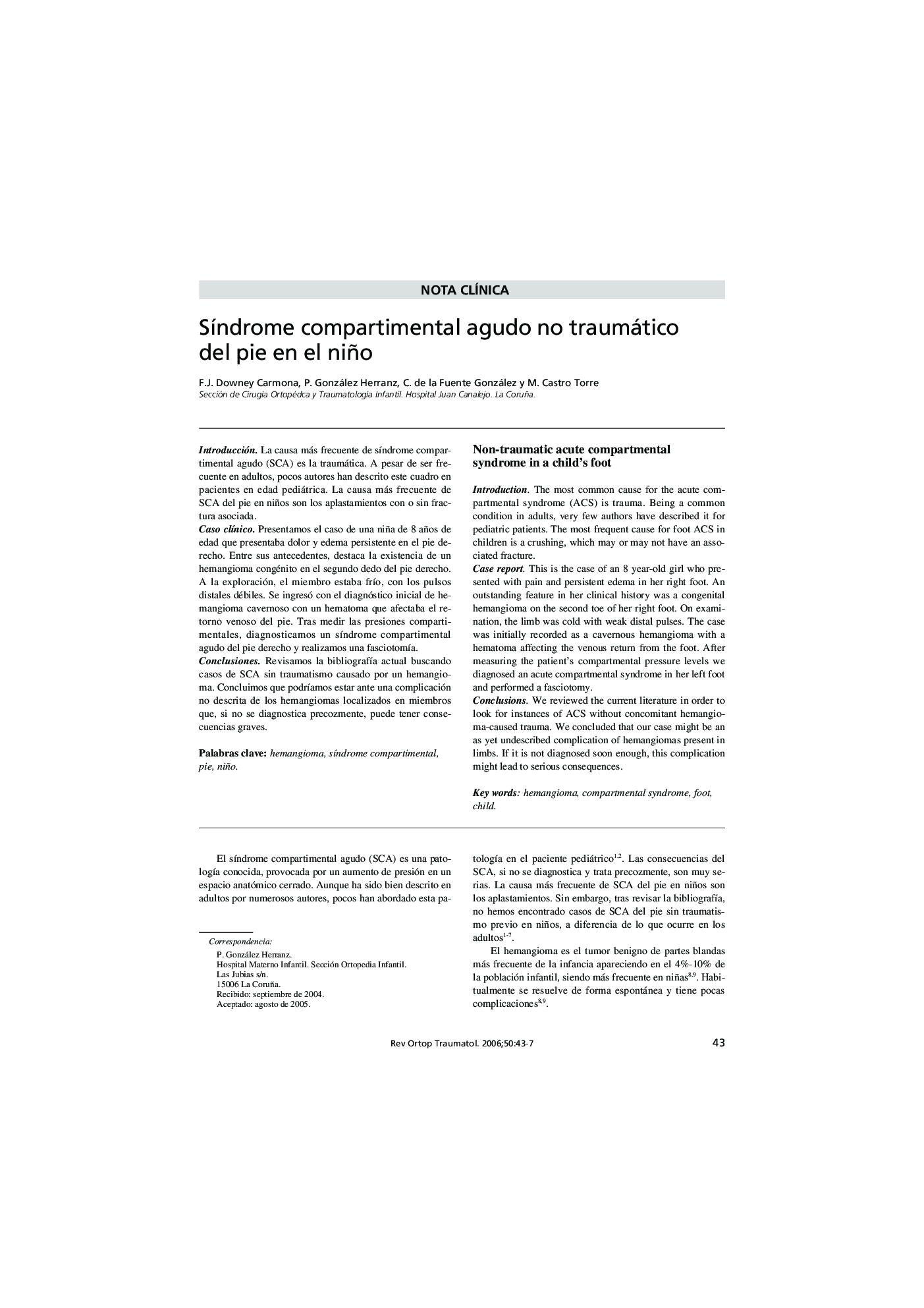| Article ID | Journal | Published Year | Pages | File Type |
|---|---|---|---|---|
| 4088140 | Revista de Ortopedia y Traumatología | 2006 | 5 Pages |
IntroducciónLa causa más frecuente de síndrome compartimental agudo (SCA) es la traumática. A pesar de ser frecuente en adultos, pocos autores han descrito este cuadro en pacientes en edad pediátrica. La causa más frecuente de SCA del pie en niños son los aplastamientos con o sin fractura asociada.Caso clínicoPresentamos el caso de una niña de 8 años de edad que presentaba dolor y edema persistente en el pie derecho. Entre sus antecedentes, destaca la existencia de un hemangioma congénito en el segundo dedo del pie derecho. A la exploración, el miembro estaba frío, con los pulsos distales débiles. Se ingresó con el diagnóstico inicial de hemangioma cavernoso con un hematoma que afectaba el retorno venoso del pie. Tras medir las presiones compartimentales, diagnosticamos un síndrome compartimental agudo del pie derecho y realizamos una fasciotomía.ConclusionesRevisamos la bibliografía actual buscando casos de SCA sin traumatismo causado por un hemangioma. Concluimos que podríamos estar ante una complicación no descrita de los hemangiomas localizados en miembros que, si no se diagnostica precozmente, puede tener consecuencias graves.
IntroductionThe most common cause for the acute compartmental syndrome (ACS) is trauma. Being a common condition in adults, very few authors have described it for pediatric patients. The most frequent cause for foot ACS in children is a crushing, which may or may not have an associated fracture.Case reportThis is the case of an 8 year-old girl who presented with pain and persistent edema in her right foot. An outstanding feature in her clinical history was a congenital hemangioma on the second toe of her right foot. On examination, the limb was cold with weak distal pulses. The case was initially recorded as a cavernous hemangioma with a hematoma affecting the venous return from the foot. After measuring the patient's compartmental pressure levels we diagnosed an acute compartmental syndrome in her left foot and performed a fasciotomy.ConclusionsWe reviewed the current literature in order to look for instances of ACS without concomitant hemangioma-caused trauma. We concluded that our case might be an as yet undescribed complication of hemangiomas present in limbs. If it is not diagnosed soon enough, this complication might lead to serious consequences.
